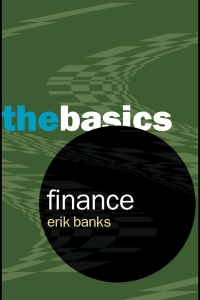Question
Accounting for Cash Receipts Wendy Dorland has just started working for a major department store as a sales associate. Jennifer is training her in the
Accounting for Cash Receipts
Wendy Dorland has just started working for a major department store as a sales associate. Jennifer is training her in the duties of the new position. At the end of the first day, Wendy and Jennifer are counting the cash in their drawer and reconciling cash receipts to the cash register total. Jennifer says: We use a cash envelope to deal with cash differences. If you are short tonight, take the cash out of this envelope to balance out. The nights you have extra cash, place the extra cash in the envelope and report that you were even. This method allows you to look good because your cash balances out. It is easier than reporting an error every day when you cash is short or over. Im so glad you will be working with us. It looks like you will catch on to the way we do business here quickly.
Required:
-
Using the Ethic Case Guidelines, write a memo with your instructor in response.
-
In the recommendation paragraph, include suggested internal controls that should be
implemented.
You are required to follow the 5-step process and use the format that is provided.
Ethics cases will require you to use the knowledge and skills that you have acquired throughout your career in the Accounting Program. These cases are designed to enhance the accounting mind in each of you as students. They will test your ability to identify and analyze an ethical dilemma. You will be required to identify all viable alternatives to a situation and weigh the impact of each alternative on the interested parties through written communication.
Each ethics case will require a typed memo to your instructor. Be sure to format the memo like a business memo (following all the guidelines for a professional memo as identified by the Accounting instructors), and include in the Subject or RE: line the name of the company involved. Be sure to follow the following four step model when responding to all ethical dilemmas assigned in the Accounting Program.
Step 1: Restate the facts and identify the ethical dilemma. An ethical dilemma occurs when a company considers a decision about an accounting method or disclosure and that decision leads to different information being communicated to stakeholders.
Step 2: Identify the following:
-
What stakeholders may benefit from the proposal/situation?
-
What stakeholders may be harmed by the proposal/situation?
Explain how the stakeholder is affected. Step 3: Explain the accounting rules, principles, and standards related to the situation.
Step 4: Identify all alternatives and discuss the impact of each alternative on the financial statements. Include the ones you would not recommend. Each alternative should be in a separate paragraph.
-
Identify the alternative methods available.
-
Discuss the effect of each alternative on the financial statements.
-
Identify which generally accepted accounting principle is adhered to or
violated?
-
Evaluate the relevance and reliability of the alternatives.
step 5: Provide your recommendation. Select the best alternative and provide supporting documentation for your decision.
Step by Step Solution
There are 3 Steps involved in it
Step: 1

Get Instant Access to Expert-Tailored Solutions
See step-by-step solutions with expert insights and AI powered tools for academic success
Step: 2

Step: 3

Ace Your Homework with AI
Get the answers you need in no time with our AI-driven, step-by-step assistance
Get Started


